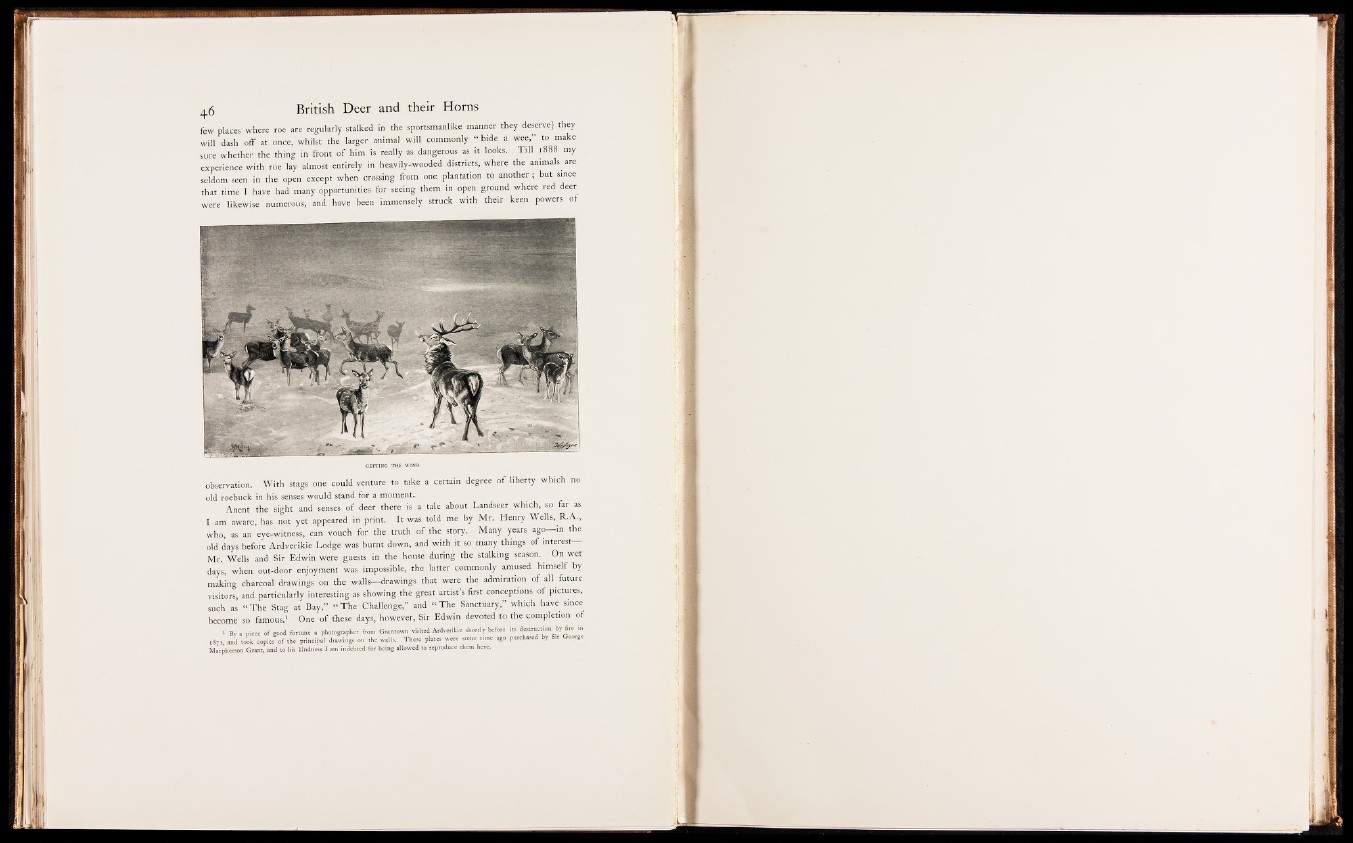
few places where roe are regularly stalked in the sportsmanlike manner they deserve) they
will dash off at once, whilst the larger animal will commonly “ bide a wee,” to make
sure whether the thing in front o f him is really as dangerous as it looks. T ill 1888 my
experience with roe lay almost entirely in heavily-wooded districts, where the animals are
seldom seen in the open except when crossing from one plantation to another ; hut since
that time I have had many opportunities for seeing them in open ground where red deer
were likewise numerous, and have been immensely struck with their keen powers of
observation. With stags one could venture to take a certain degree o f liberty which no
old roebuck in his senses would stand for a moment.
Anent the sight and' senS|s: o f deer there is a tale about Landseer w h ich ||o far as
I am aware, has not yet appeared in print. It was told me by Mr. Henry Wells, R.A.,
who, as an eye-witness,,.can v S h for the truth o f the story. Many years ago— in the
old days before Ardverikie Lodge was burnt down, and with it so many things o f interest
Mr. Wells and Sir Edwin were guests in the house during the stalking season. On wet
days, when out-door enjoyment was impossible, the latter | jm in o n ly amused himself by
m,Hng charcoal drawings on the walls— d r a w in g that were the admiration o f all future
visitors, and particularly interesting-as showing the great artist’s first conceptions. o f pictures,
S j c h as “ T h e Stag at Bay,” “ T h e Challenge,” and “ T h e Sanctuary,” which have since
become so famous.1 One o f these days, however, Sir Edwin devoted to the completion of
1 By a piece of good fortune a photographer from Grantown visited Ardverikie shortly before
1871, and took copies of the principal drawings on the walls. These plates were some time ago
Macpherson Grant, and to his kindness I am indebted for being allowed to reproduce them here.
its destruction by fire in
purchased by Sir George